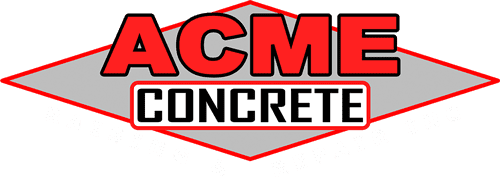
Prevent Settlement Before It Happens
Void filling and concrete stabilization are proactive solutions designed to strengthen subgrades, eliminate hidden gaps under slabs, and prevent future sinking. At Acme Concrete Raising & Repair, we use specialized polyurethane materials to fill voids without lifting the slab—ensuring long-term stability and structural integrity.
This service is ideal for:
Interior commercial floors and warehouse slabs
Sidewalks, patios, and pool decks with subbase erosion
Large slabs with vibration or movement under load
Structures over poor or water-damaged soils
We proudly serve residential, commercial, and municipal clients across our full Chicagoland service area .
Why Choose Polyurethane for Void Filling?
Polyurethane offers unmatched performance for concrete stabilization:
High Compressive Strength – Meets or exceeds Illinois Tollway standards. Learn more about compressive strength here.
Water-Resistant & Long-Lasting – Won’t wash out or break down like mudjacking materials.
Lightweight – Adds minimal stress to unstable soils.
Fast Installation & Cure Time – Most areas are ready for use in 15–30 minutes.
Precision Control – Specialized formulations allow us to fill voids without unintended lift.
Mudjacking materials add weight and can worsen settlement. Polyurethane is lighter, stronger, and engineered for long-term stability. See our Poly vs Mud page.
Technical Spotlight: RR501 Stabilizing Foam
For most void fill and stabilization projects, ACME uses RR501—a 5 lb. per cubic foot density polyurethane foam engineered specifically for stabilization rather than lifting.
Key Characteristics of RR501:
Slower Reaction Time – Allows foam to travel further before expansion, ensuring thorough void coverage.
Lower Expansion Pressure – Reduces the risk of unintentionally lifting slabs during stabilization.
High Strength – ASTM D162 compressive strength averages 112.4 PSI, providing load support for commercial and DOT-grade applications.
Water Resistance – Absorption by volume is just 0.06%, making it ideal for moisture-prone subgrades.
Ideal Applications – Undersealing, joint stabilization, machine base stabilization, and large interior slabs where movement must be eliminated without affecting elevation.
How It Differs from Lifting Foams (e.g., RR401):
Reaction Time: RR401 reacts in ~19 seconds for lifting; RR501 takes ~53 seconds, enabling broader spread.
Expansion Ratio: RR401 expands ~17x its liquid volume; RR501 expands ~15x, providing controlled fill without excessive upward force.
Purpose: RR401 is optimized for vertical lift; RR501 is engineered for horizontal spread and stabilization.
Foam Comparison Chart – RR501 vs RR401 vs RR601
Our Expertise & Credibility
Foam Type | Density (lbs/ft³) | Reaction Time | Expansion Ratio | Compressive Strength (ASTM D162) | Primary Use |
|---|---|---|---|---|---|
RR401 | 4.0–4.5 | ~19 sec | ~17:1 | 121 PSI | General lifting, commercial slabs, DOT work |
RR501 | 5.0–5.5 | ~53 sec | ~15:1 | 112.4 PSI | Stabilization, undersealing, joint support, machine bases |
RR601 | 6.0–6.5 | ~15 sec | ~12:1 | 292.1 PSI | Extra-heavy lifting, infrastructure, high-load DOT applications |
At ACME Concrete Raising & Repair, polyurethane injection isn’t just something we offer—it’s all we do.
We are proud to be:
The First Contractor in Chicagoland Specializing Exclusively in Polyurethane Injection – Since 2014, we’ve remained laser-focused on this modern, proven technology.
A Certified Foamjection Contractor – Recognized and trained by industry leader HMI to meet strict installation and material standards.
Highly Trained Specialists – Every technician is certified, hands-on trained, and experienced in both lifting and stabilization applications.
Trusted by Municipalities, Engineers & Commercial Clients – Our work meets the compressive strength and durability requirements of agencies like the Illinois Tollway Authority.
This exclusive focus means:
We don’t divide attention between unrelated services like coatings or waterproofing.
We maintain specialized equipment and multiple foam formulations for precise project matching.
Every project is handled as mission-critical, with results that are clean, accurate, and long-lasting.
With ACME, you’re hiring a polyurethane specialist—not a generalist who “also does” concrete raising.
Our Process for Void Filling & Stabilization
Inspection & Mapping – Identify void locations using laser levels, ground-penetrating radar, or visual assessment.
Drilling Injection Points – Small ⅝-inch holes are drilled in a strategic grid pattern.
Material Injection – Polyurethane is pumped in under controlled pressure to spread and fill voids.
Patching & Cleanup – Injection ports are removed and holes patched for a clean finish.
Immediate Use – Stabilized slabs are ready for traffic in minutes.
Featured Project Videos
This municipal project required polyurethane injection to stabilize the interior floor of Crystal Lake City Hall. The city specifically excluded mudjacking contractors, opting for a high-density, water-resistant polyurethane that meets Illinois Tollway compressive strength standards. The entire project was completed in hours, leaving the floor ready for immediate, unrestricted use.
During renovations at a McHenry apartment complex clubhouse, crews discovered voids over 6 inches deep beneath sections of the floor. ACME injected a specialized polyurethane designed to spread laterally without lifting, providing moisture resistance and highway-grade load capacity. The stabilized floor was ready for further construction within hours—saving the owner thousands in potential slab replacement costs.
In this warehouse, forklift traffic caused noticeable slab vibration in one area. Investigation revealed a void near a floor drain. ACME injected approximately 500 pounds of stabilizing polyurethane, filling nearly four cubic yards of space beneath the slab—eliminating movement and restoring full structural support without any lift.
Frequently Asked Questions
Q: Can void filling be done without lifting the concrete?
Yes. We use stabilization-specific foams like RR501 that spread laterally with minimal upward force, filling voids without altering slab elevation.
Q: How soon can I use the surface after stabilization?
Most surfaces are ready for full use within 15–30 minutes after injection.
Q: Is polyurethane safe for the environment?
Yes. ACME’s foams are non-toxic, inert once cured, and include recycled content. They’re also water-resistant and won’t leach harmful substances into soil. Learn more about poly health and safety here.
Q: How long does void fill foam last?
Polyurethane stabilization foams are designed to last for decades without degrading, even in wet or freeze-thaw conditions.
